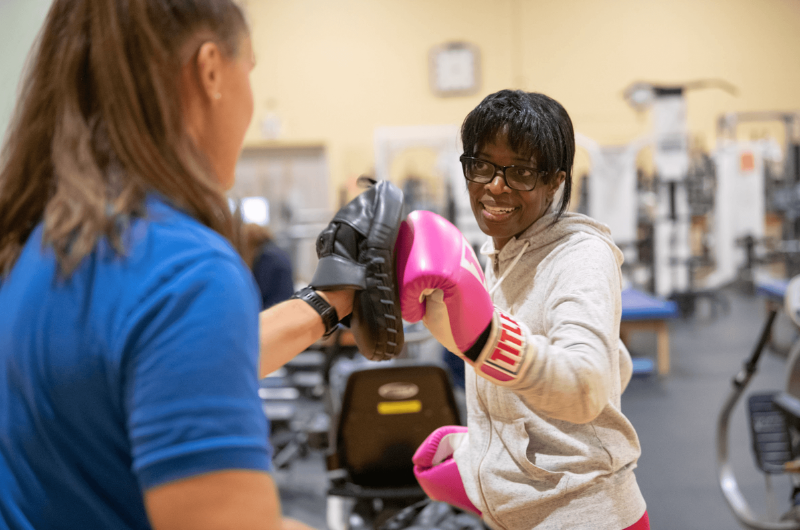Deep Brain Stimulation Relieves Debilitating Parkinson’s Tremors for Plainfield Woman

March 12, 2025
Pat Dunstan felt like a shell of her former self. The 63-year-old Plainfield, New Jersey, woman was so racked by constant whole-body shaking that she lost 30 pounds without trying. She had dealt with Parkinson’s disease symptoms for nine years. But the medicine she took for her symptoms no longer controlled her tremors.
By early 2024, the grandmother of one was miserable.
“Everything about who I was and what I was capable of was disturbed by the disease,” Pat recalls. “I looked terrible, I felt weak, and my husband, Winston, had to do everything around the house. I wanted to take a bus, plane or train and not look visibly sick, but it was clear I was ill. I was desperate to get help.”
Much-needed relief came at the Hackensack Meridian Neuroscience Institute at JFK University Medical Center. There, Pat received deep brain stimulation (DBS) surgery that relieved her worst symptoms and gave her back her vibrant personality. “It was like God sent an angel,” she says.
Ideal DBS Candidate
As many as one million Americans have Parkinson’s disease. Patients experience shaking, stiffness, balance issues, slurred speech, and many other symptoms. Difficulty thinking made Pat quit working at 53—about a year after her diagnosis. But she wanted to stay active. She joined exercise, sewing and singing groups. She also participated in JFK Johnson Rehabilitation Institute Parkinson’s Rehabilitation Program.
She hit a wall, however, when her medications lost much of their benefit. Known complications from those same drugs, such as involuntary movements, made Pat’s functioning a lot worse. That’s when neurologist Philip Hanna, M.D., director of the Parkinson’s Disease and Movement Disorders Center at JFK, suggested DBS.
DBS is a standard treatment for Parkinson’s and other movement disorders. The two-step surgery puts permanent electrodes in the brain and a stimulator device (often likened to a pacemaker for the brain) under the skin near the collarbone.
Dr. Hanna referred Pat to Vanessa C. Milano, M.D., a functional neurosurgeon at JFK, who agreed the procedure made perfect sense for Pat’s situation. “There’s too early—when medications are working well with minimal side effects—and too late—when patients are so debilitated that doing surgery could harm more than help,” Dr. Milano explains. “Pat was just in that sweet spot.”
Dramatic Difference
In May 2024, Pat underwent both steps of DBS surgery. She felt a dramatic difference in her symptoms right away—and the results have only improved with several tune-ups.
“Once in a while, I have light tremors, but I don’t have that consistent shaking,” she reports. “I look at myself in the mirror now and recognize the person there. That’s very important to me.”
While DBS doesn’t cure Parkinson’s disease, Pat and patients like her usually need much less medication afterward. Pat is so happy with her turnaround that she became an ambassador for the Parkinson’s Foundation to help others.
“Pat’s an inspiration,” Dr. Hanna says. “She’s cheerful, enthusiastic and upbeat, and she gives people a lot of confidence that they can live with the condition and prosper despite the limitations.”
Next Steps & Resources
- Meet our sources: Philip Hanna, M.D.,Vanessa C. Milano, M.D.
- Make an appointment with a neurologist or call 800-822-8905.
- Learn more about neurosciences at Hackensack Meridian Health.
The material provided through HealthU is intended to be used as general information only and should not replace the advice of your physician. Always consult your physician for individual care.






